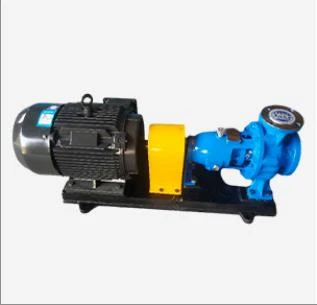Persian
- Afrikaans
- Albanian
- Amharic
- Arabic
- Armenian
- Azerbaijani
- Basque
- Belarusian
- Bengali
- Bosnian
- Bulgarian
- Catalan
- Cebuano
- Corsican
- Croatian
- Czech
- Danish
- Dutch
- English
- Esperanto
- Estonian
- Finnish
- French
- Frisian
- Galician
- Georgian
- German
- Greek
- Gujarati
- Haitian Creole
- hausa
- hawaiian
- Hebrew
- Hindi
- Miao
- Hungarian
- Icelandic
- igbo
- Indonesian
- irish
- Italian
- Japanese
- Javanese
- Kannada
- kazakh
- Khmer
- Rwandese
- Korean
- Kurdish
- Kyrgyz
- Lao
- Latin
- Latvian
- Lithuanian
- Luxembourgish
- Macedonian
- Malgashi
- Malay
- Malayalam
- Maltese
- Maori
- Marathi
- Mongolian
- Myanmar
- Nepali
- Norwegian
- Norwegian
- Occitan
- Pashto
- Persian
- Polish
- Portuguese
- Punjabi
- Romanian
- Russian
- Samoan
- Scottish Gaelic
- Serbian
- Sesotho
- Shona
- Sindhi
- Sinhala
- Slovak
- Slovenian
- Somali
- Spanish
- Sundanese
- Swahili
- Swedish
- Tagalog
- Tajik
- Tamil
- Tatar
- Telugu
- Thai
- Turkish
- Turkmen
- Ukrainian
- Urdu
- Uighur
- Uzbek
- Vietnamese
- Welsh
- Bantu
- Yiddish
- Yoruba
- Zulu
Telephone: +86 13120555503
Email: frank@cypump.com
دسامبر . 26, 2024 19:44 Back to list
Comparing Sump Pumps and Effluent Pumps for Effective Drainage Solutions
Sump Pump vs. Effluent Pump Understanding the Differences and Applications
When it comes to water management systems, particularly in residential and commercial settings, sump pumps and effluent pumps play crucial roles. Despite their similarities, these two types of pumps serve very different purposes, and knowing the distinctions between them can help you select the right pump for your needs.
What is a Sump Pump?
A sump pump is primarily designed to remove water that accumulates in a sump basin, which is usually located in the basement of a home or property. The main function of a sump pump is to prevent flooding and water damage, ensuring that the basement remains dry. Sump pumps are typically activated by a float switch that detects rising water levels. Once the water reaches a certain level, the pump will engage, pushing the water out of the sump basin and away from the foundation of the property.
Sump pumps can be classified into two main types submersible and pedestal. Submersible pumps are designed to sit in the water and are often quieter and more efficient for heavy-duty applications. Pedestal pumps, on the other hand, have their motor above the water level, making them easier to service but potentially louder in operation.
What is an Effluent Pump?
Effluent pumps, while also used for water management, serve a very different purpose. These pumps are designed to transport gray water, which is the wastewater generated from sources like sinks, showers, and washing machines that does not contain human waste. Effluent pumps are commonly used in sewer systems, particularly in situations where wastewater needs to be pumped from lower elevation points to higher elevation sewer lines or treatment facilities.
Like sump pumps, effluent pumps also use a float switch to start the pumping process, but they are built to handle heavier solids that can be present in gray water. Effluent pumps can handle solids up to about 1 inch in diameter, making them suitable for applications where some sewage is included.
Key Differences Between Sump Pumps and Effluent Pumps
sump pump vs effluent pump

1. Purpose - Sump Pump Designed to remove excess water and prevent flooding in basements. - Effluent Pump Used to transport gray water or wastewater to higher elevation sewer lines.
2. Water Type - Sump Pump Handles clean or slightly contaminated groundwater. - Effluent Pump Designed for gray water, which may contain small solids.
3. Solid Handling Capability - Sump Pump Generally does not handle solid waste. - Effluent Pump Can handle solids up to about 1 inch in diameter.
4. Applications - Sump Pump Commonly found in residential basements and crawl spaces. - Effluent Pump Often used in septic systems and gray water recycling systems.
5. Design - Sump Pump Typically constructed to be submerged and designed for continuous use with lower flow rates. - Effluent Pump Requires a more robust motor to handle the additional stress of transporting liquids with solids and usually operates intermittently.
Choosing the Right Pump
When deciding between a sump pump and an effluent pump, the first step is to clearly assess the specific need. If your primary concern is water accumulation in a basement or low area, a sump pump is the correct choice. However, if you're dealing with gray water management, such as in a laundry room or a bathroom where wastewater needs to be moved to a sewer line, then an effluent pump is required.
Conclusion
Understanding the differences between sump pumps and effluent pumps is key to effective water management in any property. While both are essential in their respective roles, selecting the right pump can prevent potential issues such as flooding, water damage, or inefficient wastewater management. By carefully evaluating your specific circumstances and application requirements, you can ensure your property remains safe and functional.
-
Horizontal Split Case Pump with GPT-4 Turbo | High Efficiency
NewsAug.01,2025
-
ISG Series Pipeline Pump - Chi Yuan Pumps | High Efficiency, Durable Design
NewsAug.01,2025
-
Advanced Flue Gas Desulfurization Pump with GPT-4 Turbo | Durable & Efficient
NewsJul.31,2025
-
ISG Series Vertical Pipeline Pump - Chi Yuan Pumps | Advanced Hydraulic Design&Durable Construction
NewsJul.31,2025
-
ISG Series Vertical Pipeline Pump - Chi Yuan Pumps | Energy Efficient & Low Noise
NewsJul.31,2025
-
pipeline pump - Chi Yuan Pumps Co., LTD.|High Efficiency&Low Noise
NewsJul.31,2025










